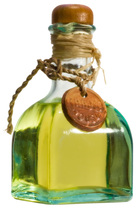There are so many different types of oils, each with its own unique flavor and nutritional makeup. Olive oil for example is often referred to as a “healthy oil”, and used in salad dressings, cooking, sauteing, and sometimes baking. However, many people are unaware that most olive oils are sensitive to high temperatures and have a low smoke point. A smoke point is the temperature that a cooking fat/oil starts to break down and produces smoke. The smoke point is also the start of when an oil begins to lose its nutritional content/value and decreases in flavor.
Every type of oil has its own smoke point, some oils are more delicate and can not withstand high heat, while others are able to handle medium to high heat and still maintain their nutritional content. When using oil to cook, it is important to understand the exact health benefits of the oil you are choosing, as well as know the smoke point for the oil. Many people like to use canola oil and/or vegetable oil when baking, although these oils have a high smoke point, they are unhealthy and actually harmful to us. For more detailed information on various oils, please refer to the website dedicated to the research of Dr. Weston Price, www.westonaprice.org. They have a great article called the Skinny on Fats, this article gives a wonderfully in-depth review/breakdown of different types of commonly used oils:
http://www.westonaprice.org/know-your-fats/skinny-on-fats
I personally very seldom cook with any type of oil besides coconut oil. I bake, saute and cook almost solely with coconut oil. The health benefits of coconut oil are so extensive, that I will eventually dedicate an entire blog post to it.
When making a salad dressing, I often use extra virgin, first cold pressed organic olive oil.
Below is a link that reviews the exact smoke point of many types of oil and fats, compliments of Wikipedia:
Smoke Points of Cooking Oils












No comments yet.